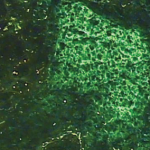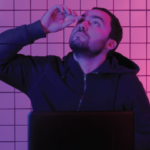There must be a transition of Ramachandran’s (and other behavioral psychologists’) observations from the level of the “integrative or mystic” practitioner to rheumatology with predictable hypotheses, reproducible methods of documentation and subsequent clinical recommendations.
For a fascinating glimpse into this new world of the neurobiology of pain and behavior (at least new to this rheumatologist), there are a large number of published articles5-8 on this, as well as available TED talks or YouTube presentations by neurologist Vilayanur Ramachandran and co-workers at University of California San Diego and Salk Institute.
It would be a worthwhile and enjoyable investment of a few minutes to appreciate the advances in neuroscience that have been revealed by functional MRI and elucidation of genetic mutations governing neuronal synaptic conductivity that influence our sensations of pain.
From Genes to Therapy: Why Have We Made So Little Progress?
We have correctly spent the past 30 years identifying the contributing genes, their epigenetic modifications and trying different therapies to block their end effect. This approach was incredibly successful in stumbling onto TNF and then other pathways in RA.
Rheumatologists need to keep our fingers on the pulse of neurologic and psychological research, since these complaints of dry eyes and dry mouth are present not only in SS, but also in depression, demyelinating diseases and aging.
Neurologic manifestations (from painful neuropathies to loss of executive function) now have rheumatologists trembling during our abbreviated time allotted for a patient revisit … and I am not sure that we have made a lot of progress with the problems that brought patients to the rheumatology clinic with a diagnosis of Sjögren’s syndrome a generation ago.
As cognizant human beings, we only know what our brain tells us is painful, and this is a learned response.
Summary
It has been a fascinating decade, and we have to warmly remember a generation of talented and dedicated researchers who established the clinical and laboratory basic guidelines of patient care for SS.
The past generation of immunology researchers has unveiled the beauty of the innate immune system as it “talks” to the “acquired” immune system.
Nevertheless, we have to recognize the overall umbrella of the “danger hypothesis” originally described by Matzinger and others that gave rise to not only recognition of these immune responses, but also the neuro-endocrine responses first recognized in the adrenocortical axis by Hans Selye more than 60 years ago.9 Our fascination with cytokine loops in rheumatology has led to our ignoring other molecular mechanisms that mediate the relation of “danger” or “stress signals” to sickness behavior.


